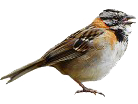How do the Zonotrichia capensis of Colombia differ from their Northern counterparts?
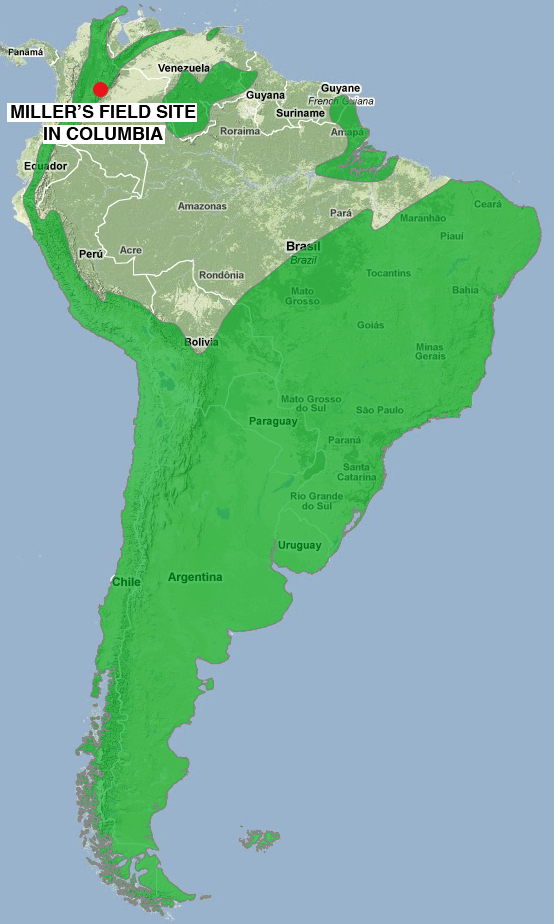
Under the leadership of Joseph Grinnell, from its inception to the late 1930s, MVZ collections focused primarily on California, with a smattering of specimens from Alaska, Oregon, and other North American localities. Grinnell’s successor, Alden H. Miller broke from tradition to incorporate representative specimens from all over the globe, including South America, New Guinea, Australia, and Jamaica. Miller’s foray into an equatorial region presented an entirely different environment and animals with a set of adaptive traits unique to the tropics. The behavior and physiology of Zonotrichia capensis’s northern temperate relatives had previously been studied and it was understood that the changing of the seasons and varying amounts of daylight regulated the life cycles of northern birds. Longer days were a trigger for some northern birds to breed, with their reproductive capacity diminishing in less favorable conditions following the breeding season. In Colombia, Miller sought to study similar phenomenon in an environment impacted by the coming and going of the rains rather than the changing of the seasons. He discovered a difference in the breeding and molting of the Andean sparrows, which was startling because these variations were seemingly detrimental to survival.
What can we learn from field-based studies?
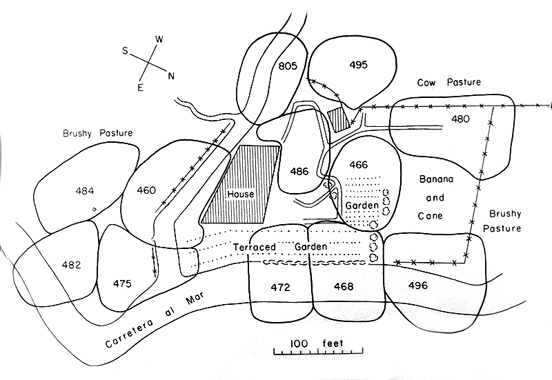
From a station in Santo Domingo, Miller made meticulous observations of Zonotrichia daily throughout 1958. During the year he observed a total of 161 nestings in the pastures and vegetation surrounding the station and discovered that unlike temperate birds, the Andean sparrows bred throughout the year with two periods of increased nesting. He searched for an environmental explanation, measuring changes in day length, temperature, vegetation, and rainfall, and discovered that the pronounced seasonal changes that affect temperate birds were largely absent in the tropics. Despite changes in the grassland following the two rainy seasons, the seeds and insects, Miller observed, “were always present in abundance.” Miller tracked the fertility of the birds he studied through anatomical variations, trapping, banding, and frequently re-trapping birds in the study area near his station. Through his detailed day to day observations of changes in Zonotrichia over the length of the year, Miller was able to deduce that the unusual biannual molt in Zonotrichia was necessary due to the drying of the grasslands between the rainy seasons, which wore down the plumage of the sparrows as they moved through the dry vegetation. The energy required to re-grow plumage in the two molts caused the periods of decreased mating.
What can we learn from studying birds in artificial conditions?
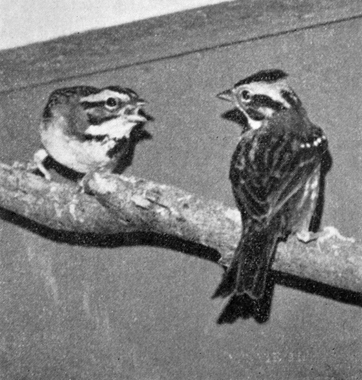
Zonotrichia capensis were brought from the Western Andes to aviaries in Berkeley, where they resided from 1959 to 1965, raised by hand and fed on canary seed and ground dog food. Observing Zonotrichia in their natural habitat had previously allowed Miller to understand how they interacted with their environment and its effects on their breeding and behavior. Observations in artificial conditions allowed him to manipulate different conditions to see the effects when they were isolated from that natural environment. A major part of the study was to determine how similar the Zonotrichia of Colombia were to northern birds in their response to seasonal photoperiodism, the changes in day length caused by shifts in the seasons. Was it their biological makeup that made them unique, or was it the environment?
In Colombia, the sparrows experienced the same amount of daylight year round; in Berkeley, they were exposed to natural light that varied from 10 to 15.25 hours depending on the season. Miller used similar methods as in the field to examine reproductive capacity. The results showed that male Andean sparrows remained able to breed despite changes in day length, regulated by an internal rhythm, while females laid eggs only when exposed to a certain amount of daylight. The captivity experiments also revealed the dramatic impact of the dry and rainy seasons upon Zonotrichia, who only molted once in captivity. In the wild they were forced to re-grow their plumage twice a year due to the abrasive effects of the dried out grasslands. From the experiments Miller found further evidence to show that molting and daylight altered the nesting activity of the Andean sparrows.
What is the relationship between behavior and biology?
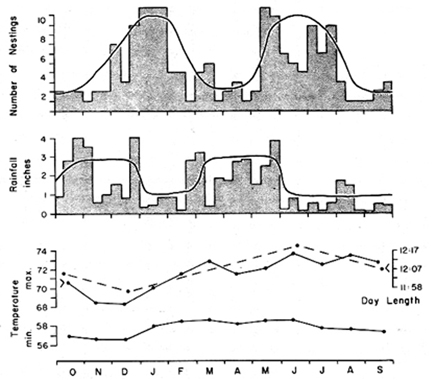
Applying knowledge of general avian anatomy to his Zonotrichia study, Miller used anatomical changes to track the breeding cycle of the sparrows without prior knowledge of the equatorial birds. Comparative anatomy enabled Miller to observe how two species, northern and equatorial, underwent different development in different habitats despite being fairly similar in physical makeup. Without a fully equipped laboratory, he was able to examine female fertility via the appearance of a brood patch, a featherless patch of skin used to warm incubating eggs and increased sizes in the cloaca, the structure through which eggs pass. On male Zonotrichia, Miller performed laparotomies to measure changes in testis size, tracking when the sparrows were capable of reproducing. Although the laparotomies, surgeries performed in the field, carried some risk of infection, a former student of Millers wrote, “he really worked out the technique for laparotomy in wild birds and used it with great success in his studies in the tropics” [Charles G. Sibley, Feb. 22, 1966]. Miller’s papers and field notes contain detailed descriptions of the condition of Zonotrichia plumage as observed year round, through which he deduced the age of the bird in question and the state of molt it was in. He theorized that the molts were caused by the psychological and physiological responses of the sparrows to the dry season and that the molts caused changes in hormone levels that altered development of the reproductive organs. The adenohypophysial mechanism controlling reproduction was innate, while the behavior that triggered it was influenced by the environment.
